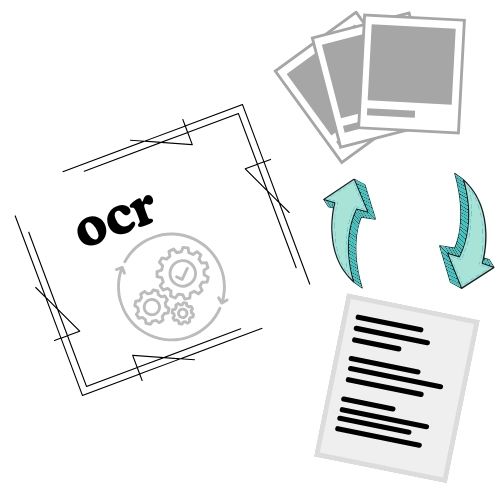
People often use “image to text” and “OCR” interchangeably — but there are differences worth knowing. This article explains what each term means, when to use them, and how to pick the right tools and workflows for extracting text from images.
What each term means (simple definitions)
Image to text — a user-friendly phrase describing the result you want: readable, editable text produced from an image (photo, screenshot, scanned page).
OCR (Optical Character Recognition) — the actual technology/process that analyzes image pixels and recognizes characters, words, and layout to produce text output.
Key differences at a glance
- Scope: “Image to text” is outcome-focused; OCR is the technical method that produces that outcome.
- Complexity: OCR covers preprocessing, recognition models, and postprocessing; image-to-text can be a one-click experience provided by a tool or app.
- Use cases: image-to-text appeals to everyday users; OCR is the term used by developers and professionals integrating text extraction into workflows.
When to say “image to text” vs when to say “OCR”
Use image to text in UI, marketing, and user-facing content (e.g., “convert photo to text”). Use OCR in technical documentation, API descriptions, or when discussing accuracy, models, and languages.
Common OCR workflows (how image becomes text)
- Capture: Photo, screenshot, or scanned PDF.
- Preprocessing: Deskew, crop, denoise, enhance contrast.
- Recognition: OCR engine identifies characters (Tesseract, cloud APIs, commercial engines).
- Postprocessing: Spellcheck, layout reconstruction, and human review for critical tasks.
For step-by-step tips to boost recognition accuracy, see our guide: Improve OCR Accuracy.
Which tools match each need?
Here’s a quick mapping from common needs to recommended tool types:
- Quick one-off conversions (user friendly): Web converters and mobile apps — e.g., ImageToTexts.net, Google Lens, Adobe Scan.
- Batch / enterprise processing: Paid OCR services and APIs — e.g., ABBYY, Google Cloud Vision, Azure OCR.
- Developers & integrations: Tesseract (open source), OCR.Space API, cloud OCR APIs.
- Handwriting recognition: Specialized models or ML services (Google Cloud handwriting model, Microsoft Read API) and manual review when necessary.
Practical examples
Example A — Copying text from a receipt
Use a phone camera, crop tightly, use a mobile scanner app (Adobe Scan, Microsoft Lens), then run OCR to extract line items and totals. Postprocess with a script or spreadsheet to normalize amounts.
Example B — Digitizing printed books
Scan at high resolution (300 DPI+), use layout-aware OCR (ABBYY, Adobe) for columns and paragraphs, then proofread. For many pages, use batch OCR with a naming convention.
Best practices when converting images to text
- Capture at high resolution and steady focus.
- Ensure even lighting; avoid shadows and reflections.
- Deskew images so text lines are horizontal.
- Choose the correct language and character set in the OCR tool.
- Use postprocessing (spellcheck, custom dictionaries) for domain terms.
- For sensitive documents, prefer local/offline OCR or trusted enterprise services.
Conclusion
In short: image to text describes the result most users want, and OCR is the underlying technology that makes it possible. Understanding the distinction helps you pick the right words, tools, and workflows for your project.
Ready to try? Convert your images now with our free tool: ImageToTexts.net.
Frequently Asked Questions
Is OCR the only way to get text from images?
Yes — extracting text from images requires OCR or a similar recognition process. There is no way to select text directly from bitmap images without OCR.
Do all OCR tools support every language?
No. Language support varies by engine. Always check if the engine or service supports the script and language you need.
Can I use OCR for handwriting?
Some OCR systems support handwriting recognition, but results are less consistent than printed text. For critical tasks, pair OCR with human review.

Leave a Reply